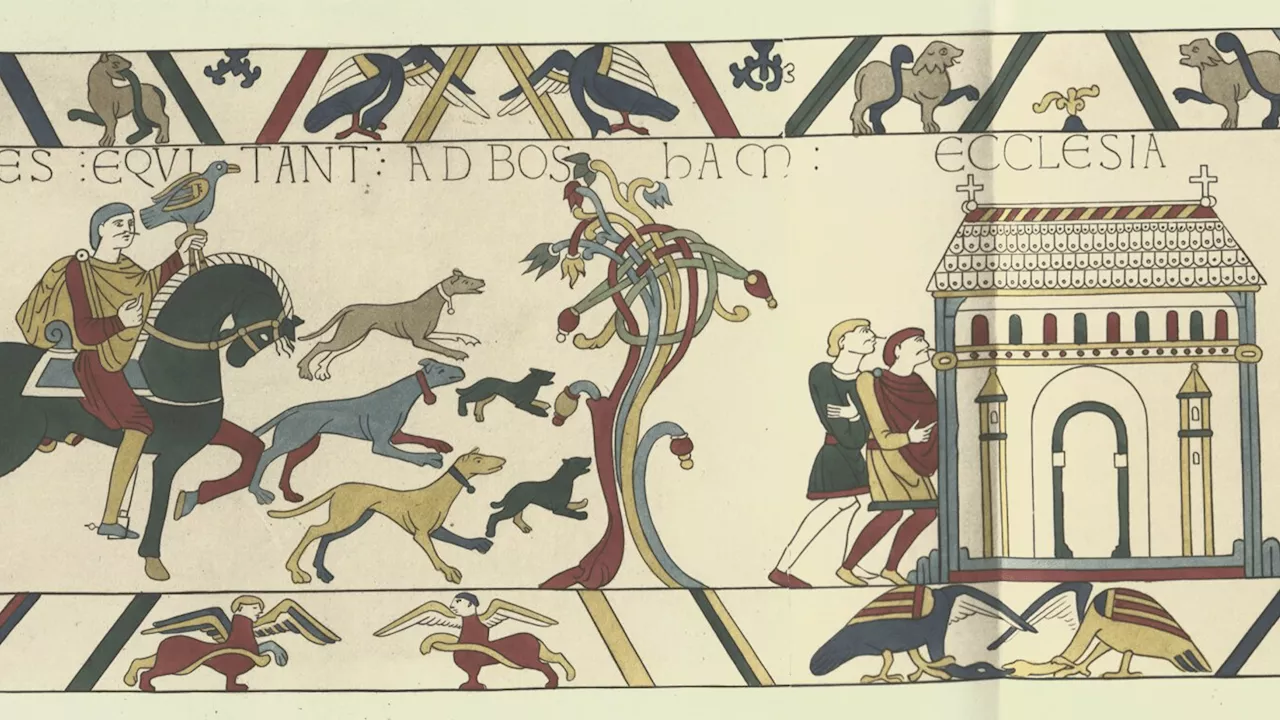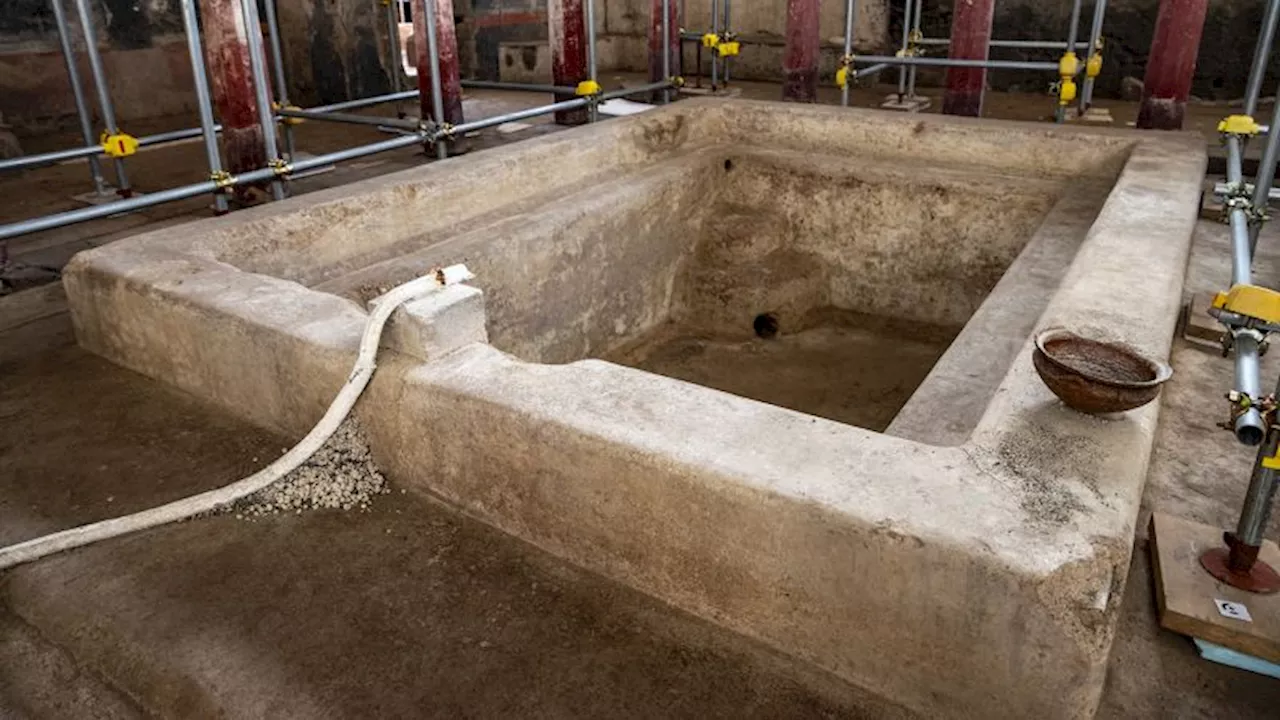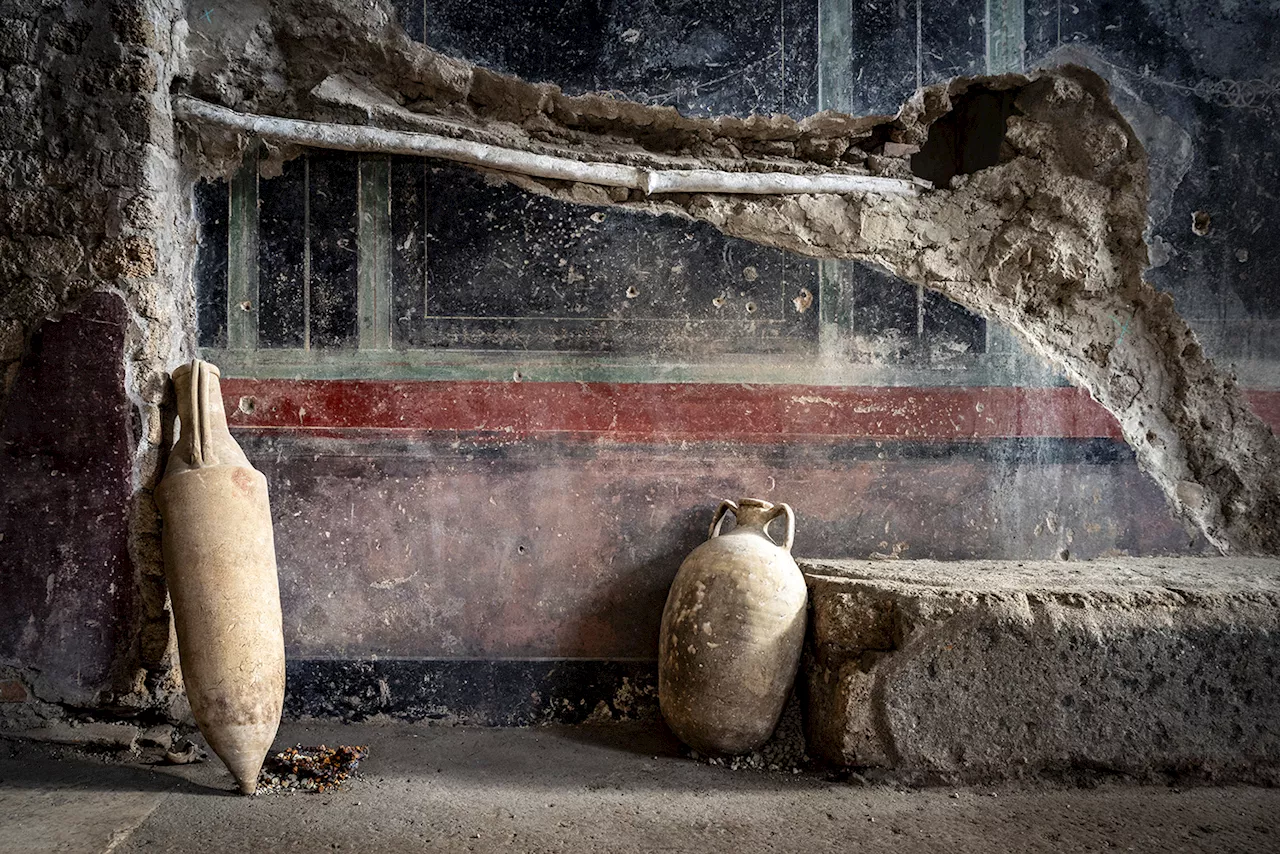A recent archaeological discovery in Bosham, England, sheds light on the residence of Harold Godwinson, the last Anglo-Saxon king, thanks to an overlooked toilet from a 2006 excavation. This finding aligns with the Bayeux Tapestry's depiction of Harold's manor and provides valuable insight into the pre-Norman Conquest era.
Dating back over nine centuries, the Bayeux Tapestry tells the epic story of William of Normandy’s conquest in England in 1066. One of the earliest scenes stitched onto the approximately 224-foot-long (68.3-meter) masterpiece depicts Harold Godwinson, the last Anglo-Saxon King of England , enjoying a feast in the village of Bosham . Now, archaeologists think they may have discovered the manor’s ruins—all thanks to a toilet.
After conducting new surveys and re-analyzing past excavations, archaeologists from the UK have uncovered what they believe to be Harold’s residence in Bosham. The manor is depicted twice in the Bayeux Tapestry, but the location of the actual building had been lost—until now. Their investigative work, detailed in a January 9 publication in the Journal of Archaeological Science, reveals a significant discovery. The Norman Conquest saw a new ruling class supplant an English aristocracy that has left little in the way of physical remains, which makes the discovery at Bosham hugely significant—we have found an Anglo-Saxon show-home,” Oliver Creighton of the University of Exeter said in a statement. Scholars had previously suggested that a private home in Bosham currently stands where the royal manor used to be, giving archaeologists from the two universities a good starting point. In addition to re-examining the results of excavations from 2006, the team conducted new surveys and studied maps, among other records. They ultimately documented two previously unidentified buildings belonging to the medieval era, which started in the UK with William’s conquest in 1066.Part of a building in Bosham the archaeologists recently discovered to be medieval, at the site of Harold’s manor. © Newcastle University However, the 2006 excavations had uncovered—and overlooked—a feature that points to a building that existed before William overthrew Harold: a toilet belonging to a large wooden building. Recently, archaeologists have realized that, starting in the 10th century CE, some prestigious residences in England had toilets, according to the researchers. The large wooden building must have been a high-status home belonging to a high-status resident. As a result, Creighton and his colleagues confidently identified it as part of Harold’s “lost” residence in Bosham from the Bayeux Tapestry, a complex that includes a surviving nearby church. “The realisation that the 2006 excavations had found, in effect, an Anglo-Saxon en-suite confirmed to us that this house sits on the site of an elite residence pre-dating the Norman Conquest,” said Duncan Wright of Newcastle University, who led the study. “Looking at this vital clue, alongside all our other evidence, it is beyond all reasonable doubt that we have here the location of Harold Godwinson’s private power centre, the one famously depicted on the Bayeux Tapestry.
BAYEUX TAPESTRY HAROLD GODWINSON NORMAN CONQUEST ARCHAEOLOGY ENGLAND BOSHAM TOILET MEDIEVAL HISTORY
United States Latest News, United States Headlines
Similar News:You can also read news stories similar to this one that we have collected from other news sources.
 Lost Residence of Harold Godwinson: Archaeological Evidence Uncovered in EnglandA team of archaeologists has identified a possible location for Harold Godwinson's residence in Bosham, England, based on evidence from the Bayeux Tapestry and recent excavations.
Lost Residence of Harold Godwinson: Archaeological Evidence Uncovered in EnglandA team of archaeologists has identified a possible location for Harold Godwinson's residence in Bosham, England, based on evidence from the Bayeux Tapestry and recent excavations.
Read more »
 Lost Residence of Harold, Last Anglo-Saxon King, Found in EnglandResearchers in the U.K. have identified a lost residential site belonging to Harold Godwinson, the last Anglo-Saxon King of England. The site, visible on the Bayeux Tapestry, has been a mystery for years, but a team believes they've found it thanks to the discovery of a latrine. The findings suggest that the building was likely a wealthy residence, possibly King Harold's hall.
Lost Residence of Harold, Last Anglo-Saxon King, Found in EnglandResearchers in the U.K. have identified a lost residential site belonging to Harold Godwinson, the last Anglo-Saxon King of England. The site, visible on the Bayeux Tapestry, has been a mystery for years, but a team believes they've found it thanks to the discovery of a latrine. The findings suggest that the building was likely a wealthy residence, possibly King Harold's hall.
Read more »
 Archaeologists Believe They've Found the Lost Home of England's Last Anglo-Saxon KingA team of archaeologists in the United Kingdom believe they have uncovered the lost residence of Harold Godwinson, the last Anglo-Saxon King of England. The home is depicted in the 1,000-year-old Bayeux Tapestry and was found through a combination of new surveys and reinterpretation of evidence from earlier digs.
Archaeologists Believe They've Found the Lost Home of England's Last Anglo-Saxon KingA team of archaeologists in the United Kingdom believe they have uncovered the lost residence of Harold Godwinson, the last Anglo-Saxon King of England. The home is depicted in the 1,000-year-old Bayeux Tapestry and was found through a combination of new surveys and reinterpretation of evidence from earlier digs.
Read more »
 Archaeologists Discovered a Hoard of Roman Coins Hidden in a WWII MinefieldSearch for hoard worked around WWII-era bombs
Archaeologists Discovered a Hoard of Roman Coins Hidden in a WWII MinefieldSearch for hoard worked around WWII-era bombs
Read more »
 Pompeii Archaeologists Unearth Elaborate Thermal Bath ComplexA recently unearthed thermal bath complex at the archaeological site of Pompeii reveals how elite Romans entertained their guests during lavish feasts. The discovery sheds light on the social customs and architectural grandeur of ancient Roman society.
Pompeii Archaeologists Unearth Elaborate Thermal Bath ComplexA recently unearthed thermal bath complex at the archaeological site of Pompeii reveals how elite Romans entertained their guests during lavish feasts. The discovery sheds light on the social customs and architectural grandeur of ancient Roman society.
Read more »
 Pompeii Archaeologists Unearth Largest Private Bath ComplexArchaeologists in Pompeii have uncovered a vast private bath complex, potentially the largest of its kind in a residential house, complete with mosaics and rooms for hot, warm, and cold water treatments. The discovery sheds light on the luxurious lifestyles of Pompeii's elite, who used these spaces for both social gatherings and personal relaxation.
Pompeii Archaeologists Unearth Largest Private Bath ComplexArchaeologists in Pompeii have uncovered a vast private bath complex, potentially the largest of its kind in a residential house, complete with mosaics and rooms for hot, warm, and cold water treatments. The discovery sheds light on the luxurious lifestyles of Pompeii's elite, who used these spaces for both social gatherings and personal relaxation.
Read more »
